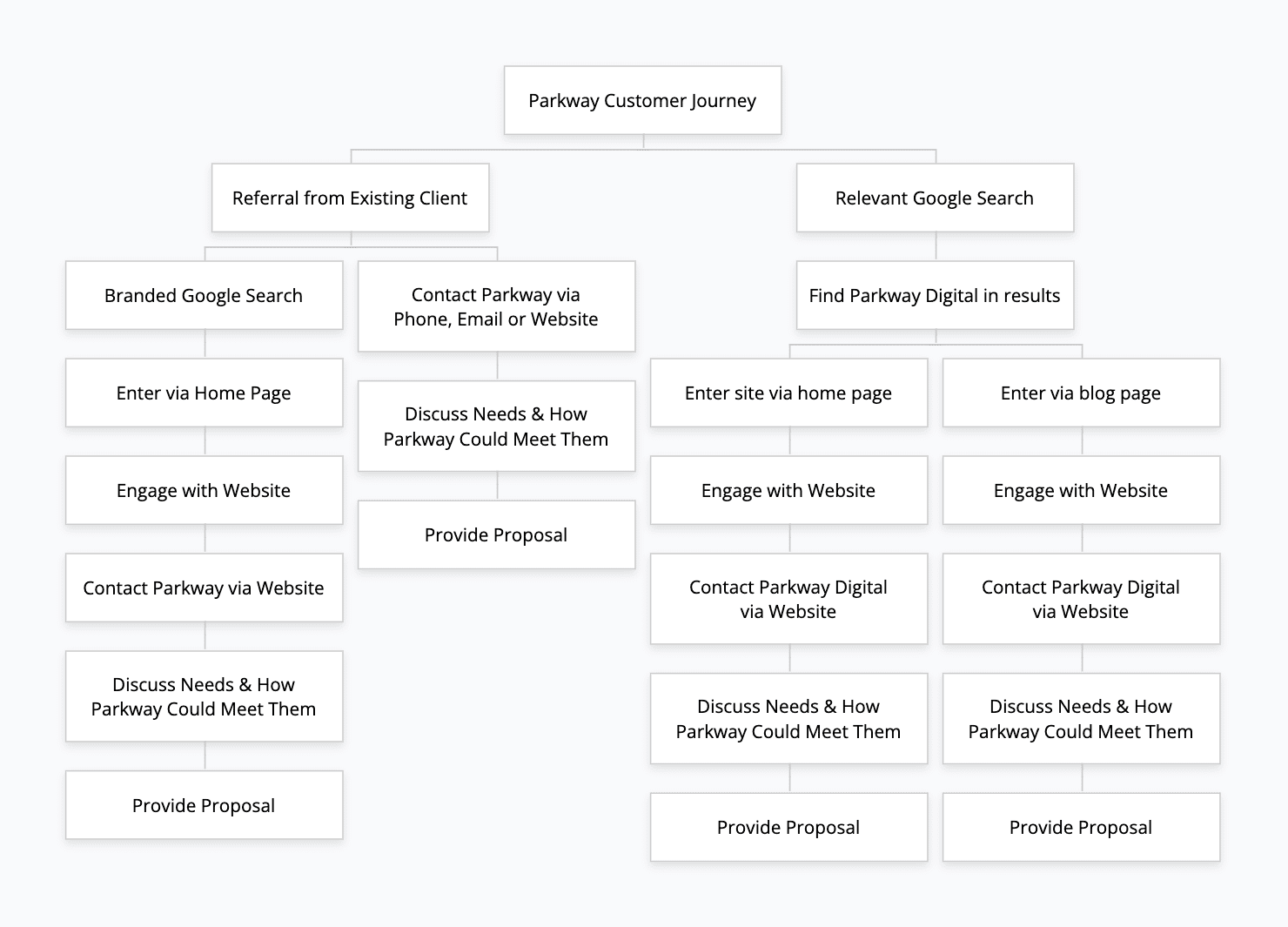Before your prospects become your customers, they go through a series of steps that make up the customer journey. Every business has its own customer journey. No matter how you obtain your customers, you should be trying to make their experience as easy as possible. The simpler, more effective the experience, the better the chance they’ll make an initial purchase and return in the future.
First, we need to understand just what the customer experience journey actually is. Then we can optimize it.
Customer Experience Journey
Awareness
01
Potential customers acknowledge they have a need for a product or service.
Consideration
02
Prospective buyers evaluate their options and where they plan to make their purchase.
Purchase
03
A selection is made and the purchase is completed.
Retention
04
Businesses try to keep customers coming back for repeat/continuing purchases.
Advocacy
05
Happy customers recommend the business to other potential buyers. Every business should want its customers to end up here.
Step 1: Experience the Customer Journey for Yourself
Have you ever bought something from your business? If not, it’s time to try out the systems you currently have in place. Go to your company’s website, sign up for your email campaign, visit a store that sells your product, or schedule a phone call with a salesperson. Take note of the experience. What worked well? What could have gone better? If you notice any hiccups in the process, so will potential customers.
Step 2: Visualize Your Customer Journey
Create a visual representation of your customer journey based on the experience you had as the “customer.” We recommend using Gloomaps for this process, called customer journey mapping. Document the path you took and add new steps that you think will improve the process. What could help prospects in the consideration stage move into the purchase stage?

Step 3: Collect Customer Insights
Who better to help you improve customer experience than your own patrons? Collaborate with marketing, sales and customer service teams to collect and analyze data. Online surveys, social media and market research can all be used to gather this invaluable information. Take note of any areas that your customers find to be inefficient or challenging.
Step 4: Implement Your New Touchpoints
Now that you have a clearer vision, it’s time to put the new journey into practice. Based on your results, you may want to update your website, add new signage to your storefront or address frequently asked questions with sales and customer service teams.
Step 5: Evaluate Your New Customer Journey
Set goals before refining your customer journey so you can evaluate the success of the changes you implemented. Measure how many more customers made online and in-store purchases. How many of those were first-time buyers? Did shoppers spend more than typical? Are customers less likely to turn to competitors when they need to replace your product?
Refining and testing your customer journey is a long-term process that should evolve along with your business. Remember that ease of use, simplicity and accessibility are all vital for a successful customer experience.